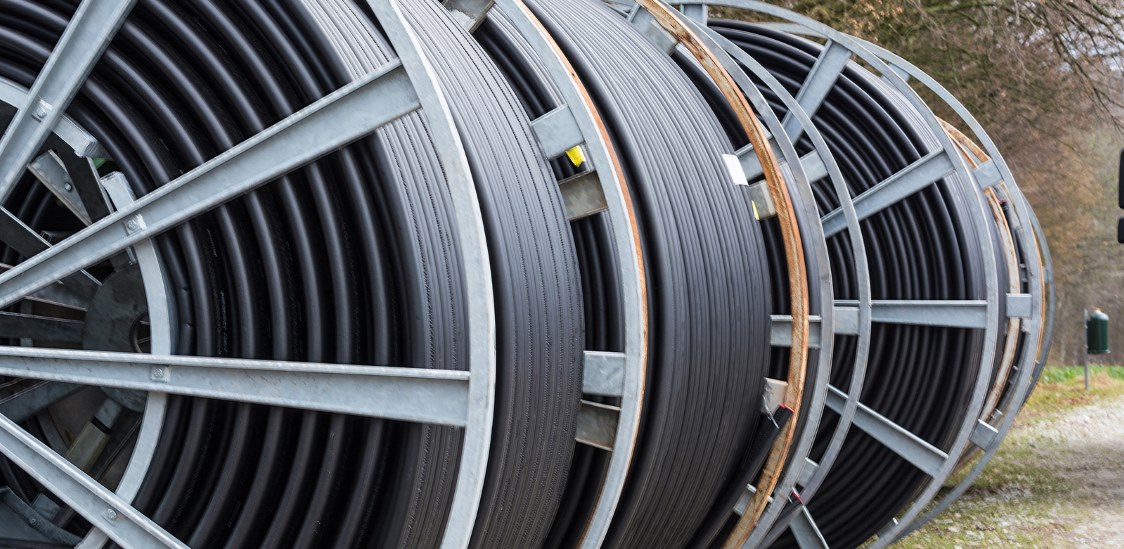Digital equity and inclusion means enabling all communities, just as universal access to power, water, sanitation, and transportation did previously. The availability of robust internet allows a community to compete on the world stage. It offers access to greater educational and economic development opportunities. Communities that have been allocated part of the $42.45 billion Broadband Equity, Access, and Deployment (BEAD) Program funds will look to bring broadband access to their houses, apartments, libraries, and other community anchor institutions like hospitals and municipal buildings. Over the next four years, as they implement their BEAD-funded builds, communities will balance the goal of closing the digital divide with the desire to support next-generation 5G and industrial use cases to provide further economic development. In other words, as an industry, we want to be building out the fiber optical network entirely to benefit of the entire community.
In our collective effort to close the digital divide, it is paramount that the networks we build support the full range of community use cases. This is especially important in rural America, where the cost to connect can be prohibitively high. This is why government-administered stimulus funding is directed at these digital deserts. It’s about building it right the first time. These new networks need to support multiple use cases and, when possible, leverage existing fiber infrastructure previously built out for fiber-to-the-home (FTTH) or middle-mile networks. Let’s look in more detail at the different community broadband use cases and the different network requirements for each.
Connecting every house is critical, but so is connecting apartments, schools, and libraries
The National Telecommunications and Information Administration, which is administering BEAD Program funding, reported that a 2021 study showed 13.8 million homes had no interest in having internet, despite 12% of these having school-aged children, with another 4.4 million citing internet service as being too expensive. This points to the importance of providing robust connections to our schools and libraries, where children and their parents can go to connect to the internet when there is no internet access at home.
Modern FTTH technology will be used for the most part to deliver high-speed broadband access services to homes at gigabit speeds. This is an excellent service rate for a single-family home that on average does not exceed 100 Mb/s speeds at peak times. This is not so for apartments, schools, and libraries, which require greater capacity due to the greater number of online devices. This means many communities, in lieu of using the FTTH network, directly connect their apartments, schools, and libraries to higher-capacity middle-mile networks – the networks that sit between core transport networks and broadband access networks. Many current middle-mile aggregation networks were built out a decade or more ago. At that time, many deployed the latest “edge-optimized” optical networking technology, which was 10 Gigabit Ethernet (GbE) over DWDM, with multiple 10 GbE connections supported on a single fiber pair used to aggregate low-capacity broadband platforms, business services, and anchor institutions.
FTTH technologies leverage unique single-fiber working (SFW) point-to-multipoint networks that cost-effectively deliver multi-gigabit speeds, while separate parallel fiber optic networks are used to deliver services at 10 Gb/s and greater. Modern FTTH networking platforms, known as optical line terminals (OLTs), each support thousands of multi-gigabit connections. Due to this high concentration of high-bandwidth connections, these modern OLTs include 100 GbE and 400 GbE network interfaces to connect to the middle mile. This again points to the use of the latest edge-optimized optical networking technologies having the ability to deliver 25 Gb/s to 400 Gb/s services over SFW PON infrastructure. Today, this means using intelligent coherent optical pluggables, as defined by the Open XR Optics Forum, to support the growing internet traffic demands of a community. A single optical distribution network (ODN) serves low-priced residential broadband and more lucrative high-capacity services.
It should be noted that many of these OLT platforms will be deployed in remote cabinets replacing existing FTTH and/or DSL broadband platforms. This means middle-mile coherent optical networking gear interfacing to these new OLT platforms would be deployed in these same remote cabinets; therefore, platforms will be ultra compact and operate in extended temperature ranges.
Network capacity is critical, but so is network availability
Beyond our homes, schools, and libraries where we live and learn, a community is also supported by medical and municipal services. These vital services need broadband access to support critical care and communications services, but beyond network capacity they need the highest levels of network availability. In an emergency, first responders require uninterrupted communications. Hospitals demand always-on connectivity to patient records and the ability to reliably send diagnostic images. Rural communities without access to local medical services can benefit from remote medical services and telemedicine. For example, remote surgery services will demand the highest levels of network reliability. Due to this, optical networking platforms need to be highly tolerant of faults and congestion. This is especially true for optical networking platforms in the middle mile. These platforms can serve dozens of neighborhoods, areas with hospitals and key municipal buildings supporting public safety and emergency medical services. They cannot go down. Networking solutions need to preserve service continuity.
5G xHaul, MEC, and Industry 4.0 use cases require low latency and high capacity
Underpinning the economic development of a community is its ability to support enterprise growth and emerging industries. To be competitive in the global economy, enterprise and manufacturing sites are employing Industry 4.0 initiatives including advanced robotics, industrial IoT, real-time data analytics, computer vision, and predictive maintenance. Many of these applications require the lowest levels of network latency to transfer delay-sensitive commands and collect network conditions in real time. They will be enabled by 5G coverage and multi-access edge compute (MEC) devices located within the 5G radio access network (RAN).
5G xHaul network latency requirements vary depending on the functional splits of the radio access network. Roughly and respectively, the 5G backhaul, midhaul, and fronthaul connections require increasingly greater connection capacity, up to 25 Gb/s per interface, and a decreasing connection delay in the order of 10,000, 1,000, and 100 microseconds. Networking solutions need to deliver low network latency and the ability to deliver high-capacity connections to 5G towers and large enterprise sites. Support for network timing synchronization is also a key consideration.
Conclusion
Network operators are building out new ODNs to reach unserved and underserved households and community anchor institutions. They will also expand the capacity, reliability, and extensibility of existing middle-mile networks and build out new networks. Network operators and community leaders will consider the full range of present and future community broadband use cases as they decide which technologies they will deploy. The cost to build, operate, and maintain these new networks will also be considered. Building dedicated single-use-case networks will be avoided as it increases both project cost and risk. Communities want to enable the greatest return on their network investment while opening a universe of bandwidth-intensive and latency-sensitive applications to the benefit of the entire community.




















